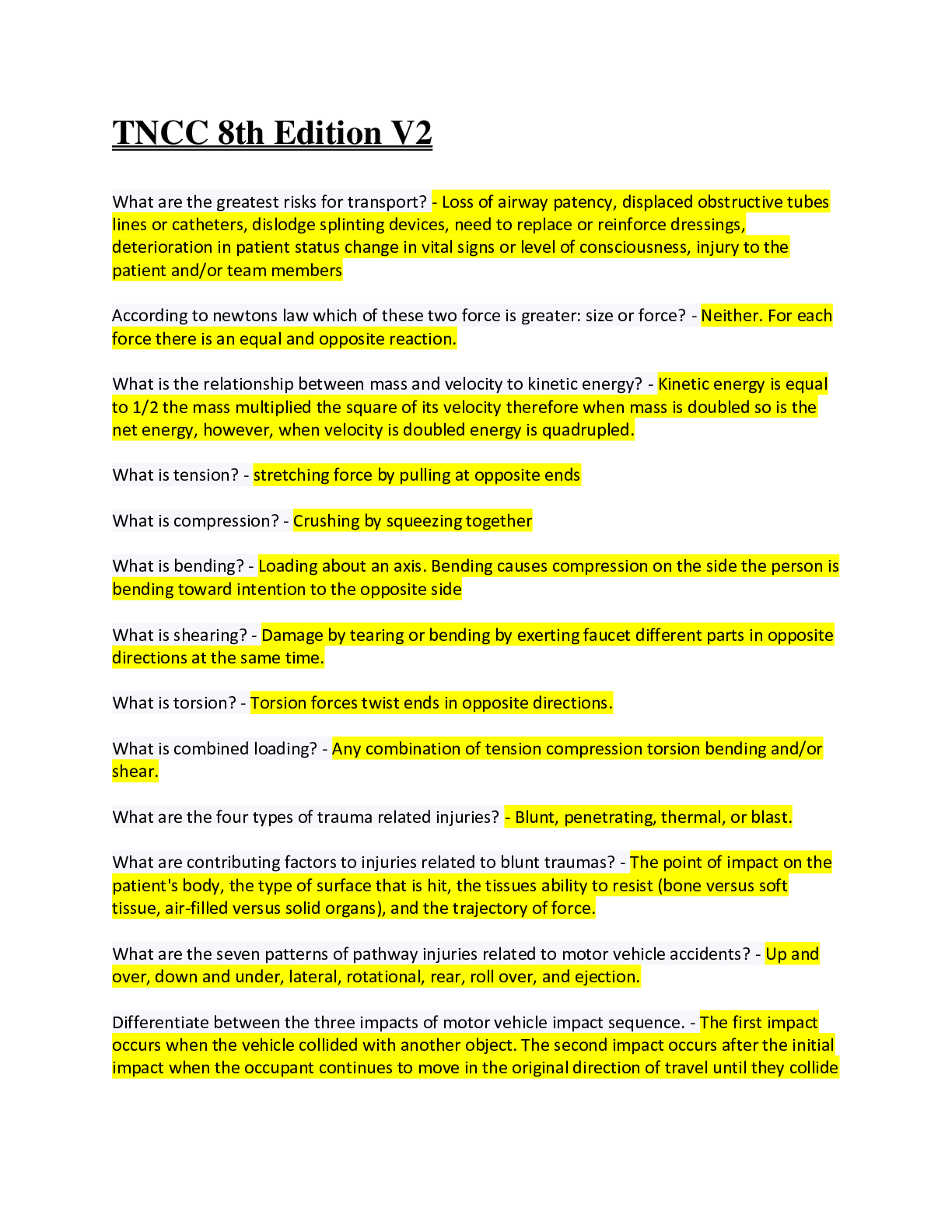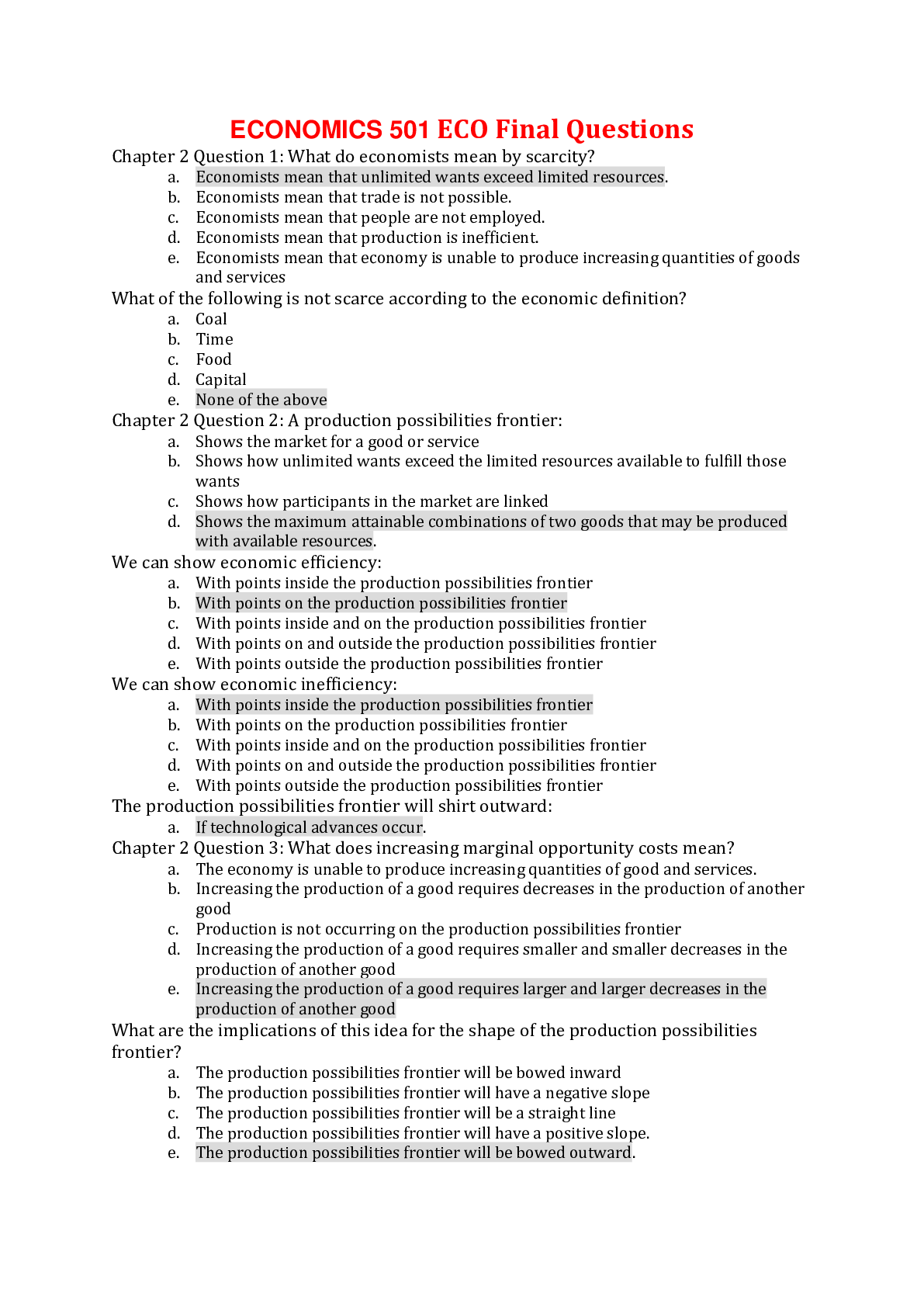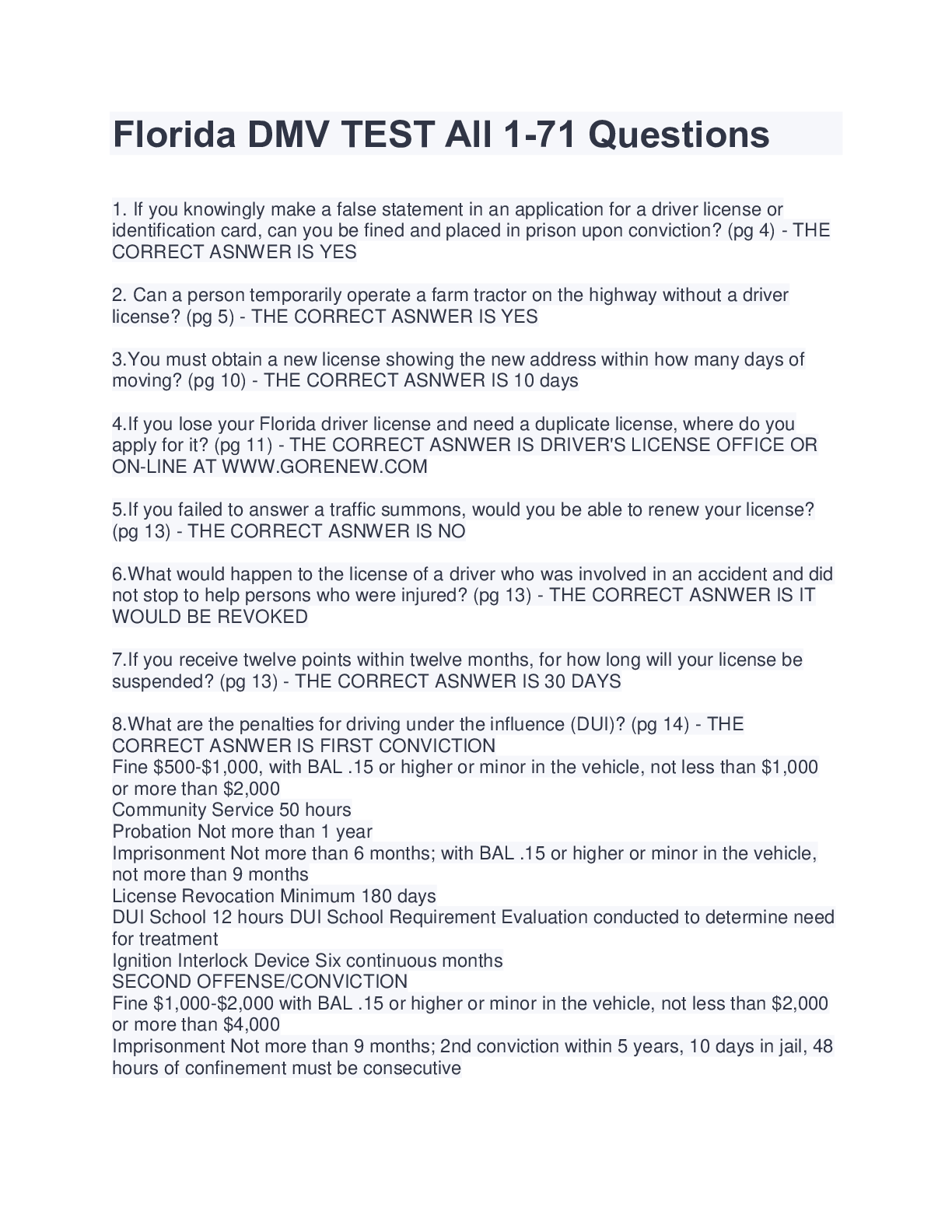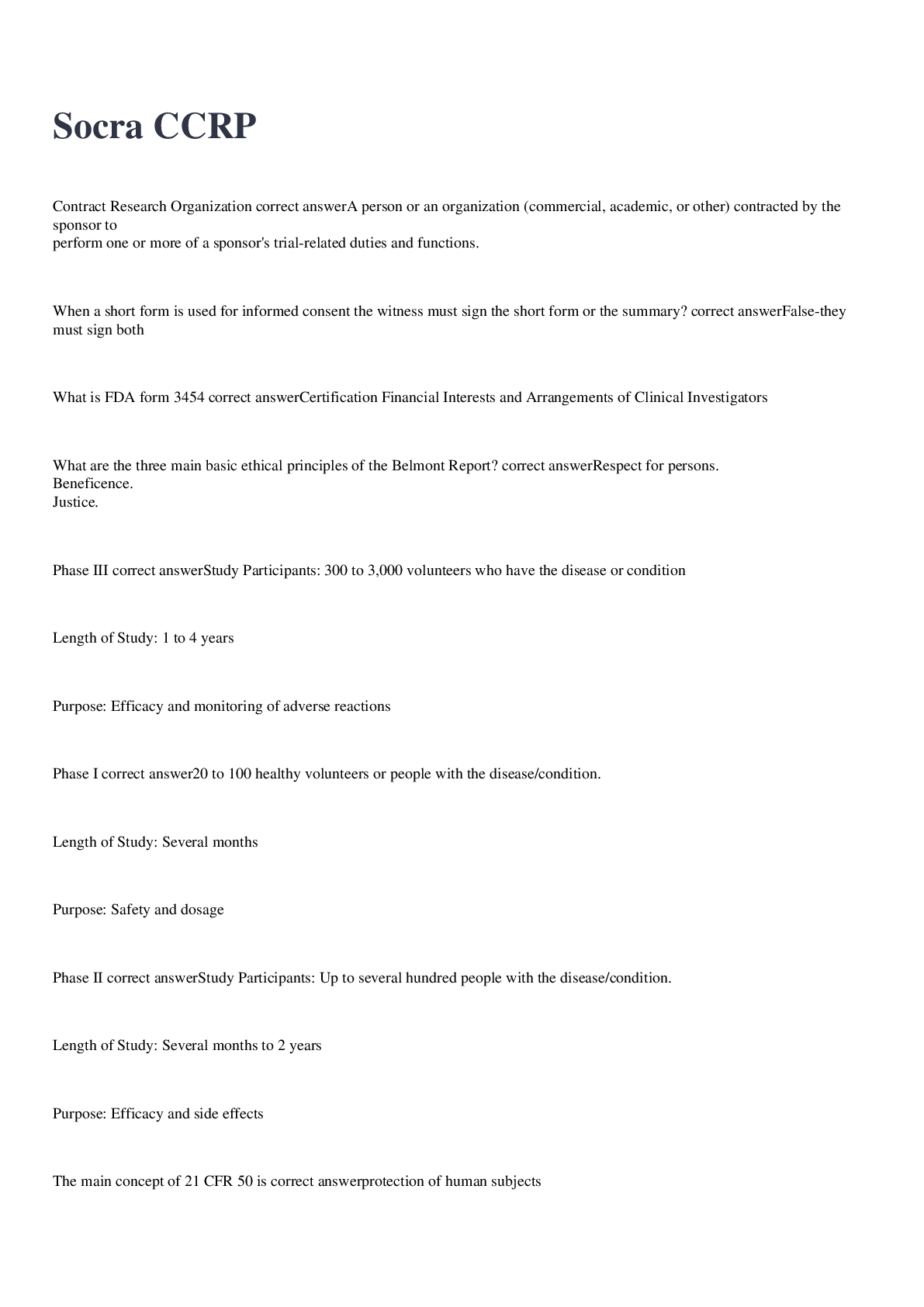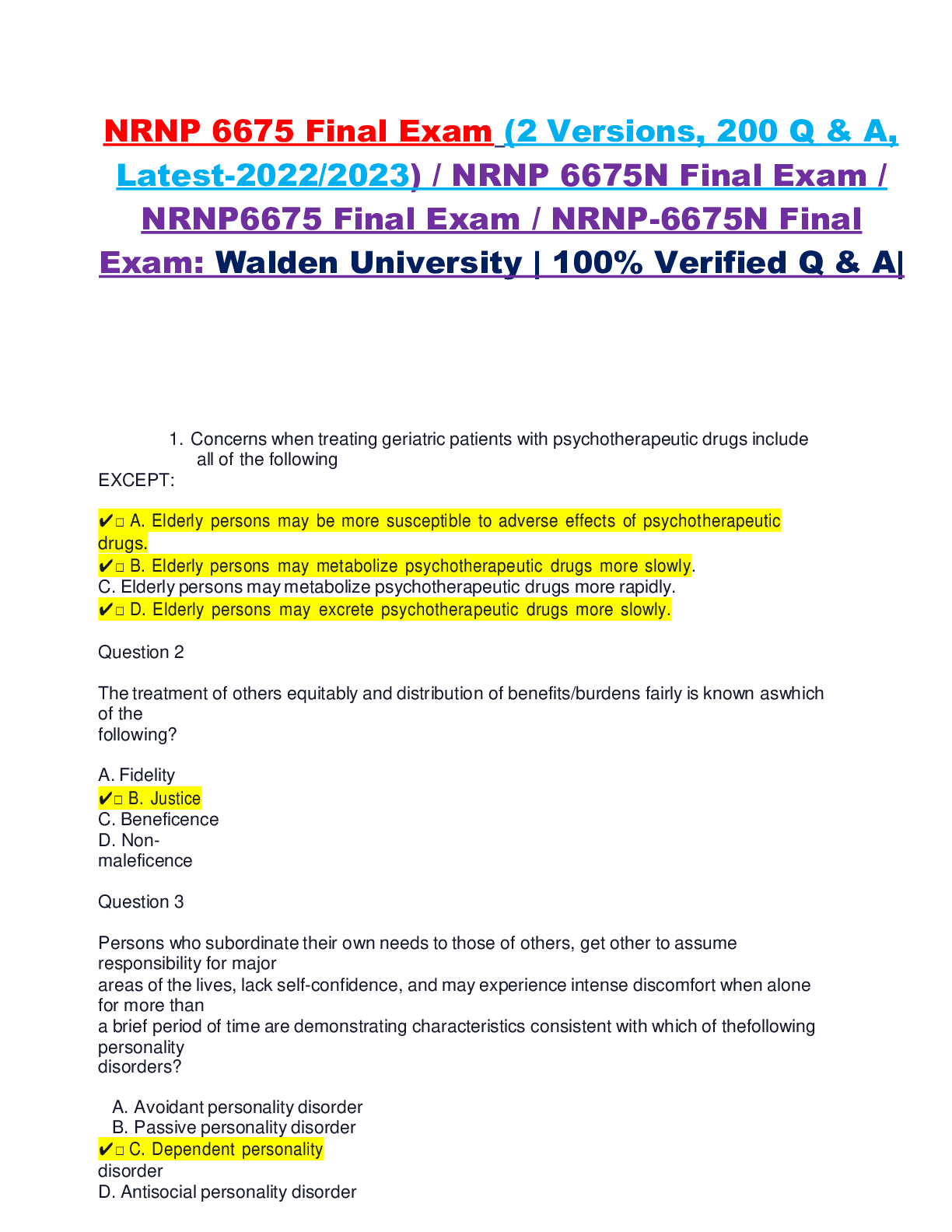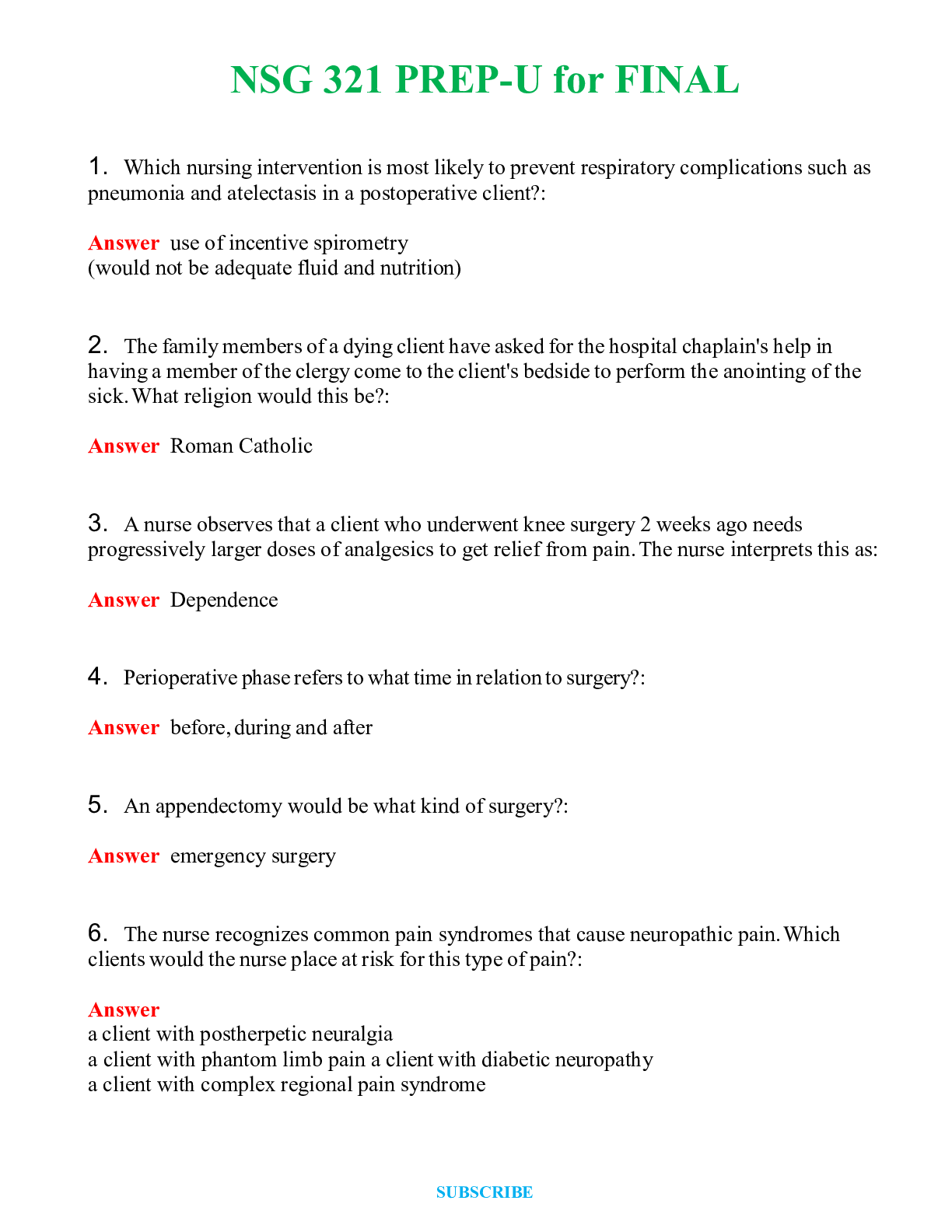PATHO 2410 Cognition/Perception/Mobility Test Bank
Document Content and Description Below
Cognition/Perception & Mobility (CP #5) Test Bank Chapter 15 1. What do the extrinsic muscles of the eye control? a. Movement of the eyeball b. Movement of the eyelid c. Size od the pupil d. Sha... pe of the lens 2. What must happen for the pupil of the eye to dilate? a. The circular muscle of the iris must contract. b. Cranial nerve III must be activated. c. Stimulation of the sympathetic nervous system is required. d. The optic nerve must be stimulated. 3. Which of the following is caused by an irregular curvature of the cornea or lens? a. Nystagmus b. Astigmatism c. Hyperopia d. Strabismus 4. Trachoma is an eye infection caused by: a. Influenza virus. b. Candida albicans. c. Staphylococcus bacteria. d. Chlamydia bacteria. 5. Which statement does NOT apply to chronic glaucoma? a. Degeneration and obstruction of the trabecular network b. Gradual increase in intraocular pressure c. Abnormally narrow angle between the cornea and iris d. Damage to the retina and optic nerve 6. Which disorder is manifested by loss of peripheral vision? a. Retinal detachment b. Chronic (wide-angle) glaucoma c. Cataract d. Macular degeneration 7. Which of the following involves a gradual clouding of the lens of the eye? a. Glaucoma b. Cataract c. Macular degeneration d. Keratitis 8. Which of the following is a likely consequence of an untreated detached retina? a. Lack of nutrients causing death of retinal cells b. Edema of the cornea causing blurred vision c. Cupping of the optic disc with damage to the optic nerve d. Damage to the fovea centralis 9. Which of the following is a sign of a detached retina? a. Painless blurring of vision b. Eye pain, halos around lights, and nausea c. Progressive loss of central vision d. No pain, development of a dark area in the visual field 10. What is the basic pathological change with macular degeneration? a. Increased amount of aqueous humor in the eye b. Movement of vitreous humor between the retina and the choroid c. Degeneration of the retinal cells in the fovea centralis d. Damage to the optic nerve and meninges 11. What does the inner ear contain? a. Malleus, incus, and stapes b. Organ of Corti and semicircular canals c. Tympanic membrane and auditory canal d. Ossicles and oval window 12. Which of the following is an example of conduction deafness? a. Damage to the organ of Corti b. Degeneration of cranial nerve VIII c. Adhesions reducing the movement of the ossicles d. Trauma affecting the temporal lobe 13. In a case of acute otitis media, what would a purulent discharge in the external canal of the ear and some pain relief likely indicate? a. Infection of the external ear b. Obstruction of the auditory tube c. Rupture of the tympanic membrane d. Spread of infection into the mastoid cells 14. How does otosclerosis cause hearing loss? a. Fixation of the stapes to the oval window b. Adhesions between the ossicles c. Fibrosis in the tympanic membrane d. Overgrowth of bone obstructing the auditory tube 15. Why does vertigo occur with Ménière’s syndrome? a. Fluid is lost from the inner ear. b. Increased blood pressure causes edema in the middle and inner ears. c. Damage occurs to the vestibular branch of the auditory nerve. d. Excessive endolymph impairs the function of hair cells in the labyrinth. 16. Which is the early effect of age-related macular degeneration? a. Loss of central visual acuity b. Intermittent pain and blurred vision c. Loss of peripheral vision d. Loss of night vision and color perception 17. Which of the following is often the first sign of ototoxicity from drugs or chemicals? a. Sudden total loss of hearing b. Tinnitus c. Severe pain in ear d. Fluid exudate draining from ear 18. Which of the following statements is TRUE? a. Conduction deafness results from inner ear damage. b. Cochlear implants may restore hearing in cases of sensorineural loss. c. Damage to the auditory area of the brain causes deafness in one ear. d. Cochlear implants can replace the auditory pathway in all deaf individuals. 19. Loss of the left visual field results from damage to the: a. Left optic nerve b. Right optic nerve c. Left occipital lobe d. Right occipital lobe 20. The involuntary abnormal movement of one or both eyes is referred to as: a. Strabismus. b. Nystagmus. c. Presbyopia. d. Diplopia. 21. An infection that damages the auditory nerve can cause what type of hearing loss? a. Sensorineural b. Conduction c. Semiacute d. Inflammatory 22. Which fluid is found surrounding the optic disc? a. Aqueous humor b. Vitreous humor c. Cerebrospinal fluid d. Tears 23. The area providing the greatest visual acuity is the: a. Macula lutea b. Fovea centralis c. Optic d [Show More]
Last updated: 1 year ago
Preview 1 out of 19 pages
.png)
Reviews( 0 )
Document information
Connected school, study & course
About the document
Uploaded On
May 04, 2021
Number of pages
19
Written in
Additional information
This document has been written for:
Uploaded
May 04, 2021
Downloads
0
Views
42


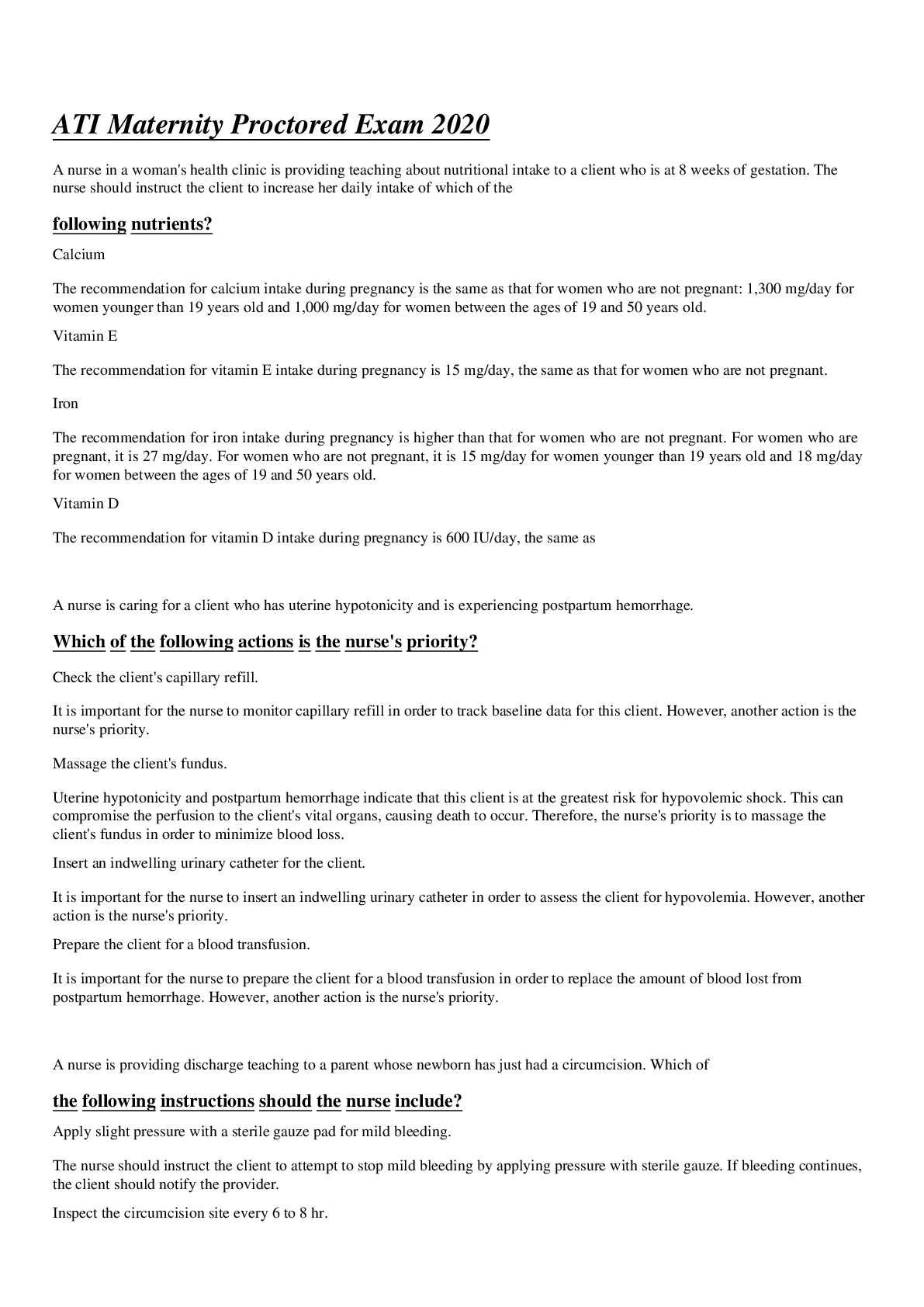
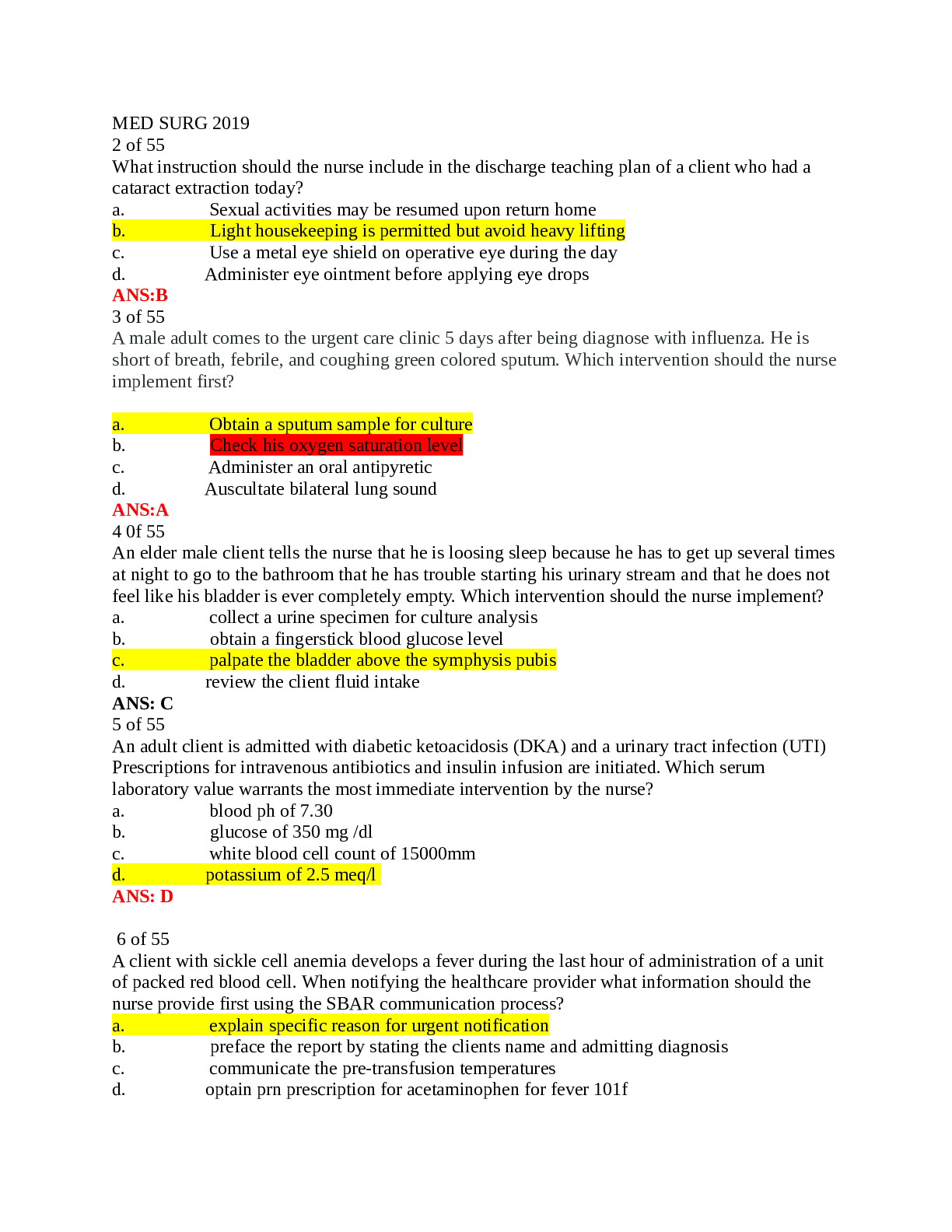
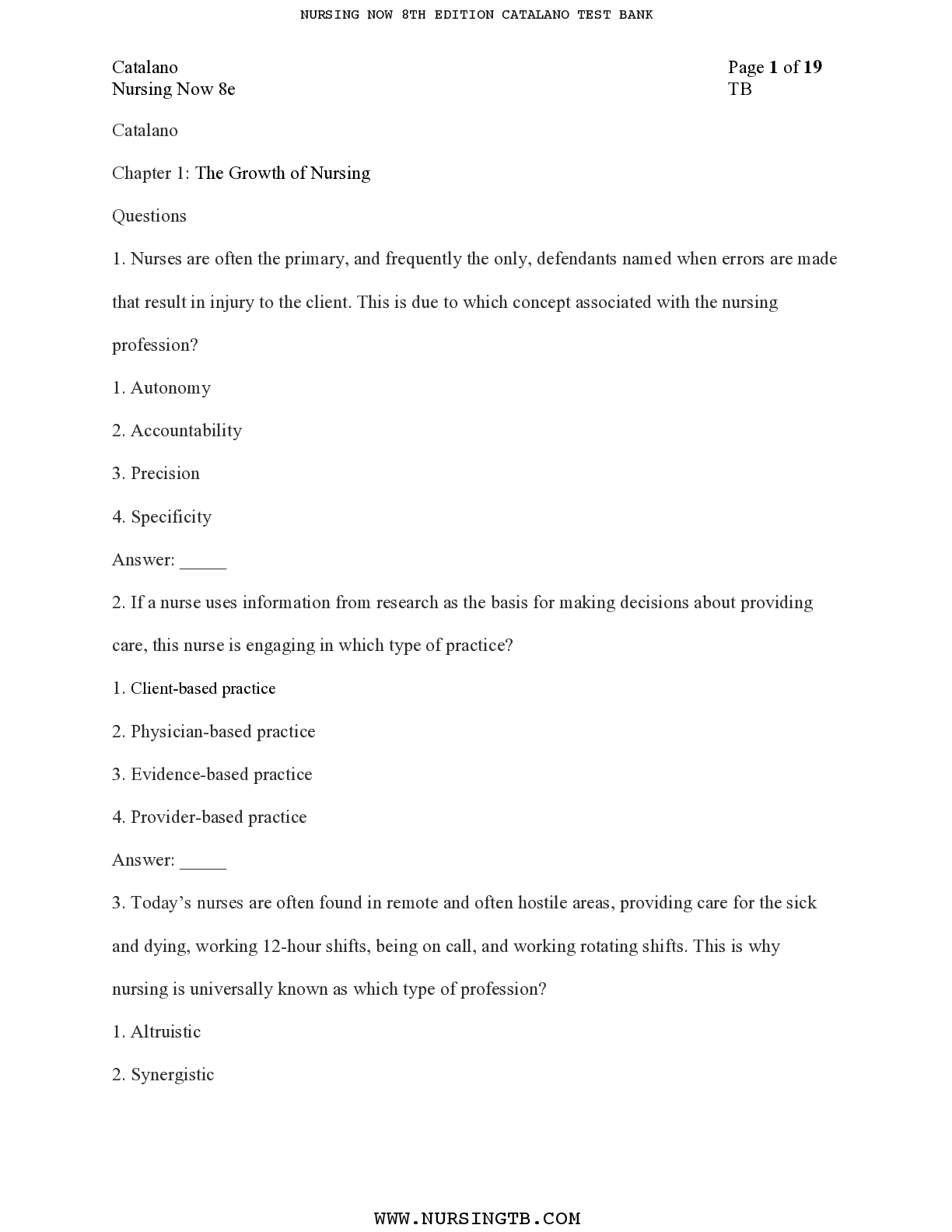
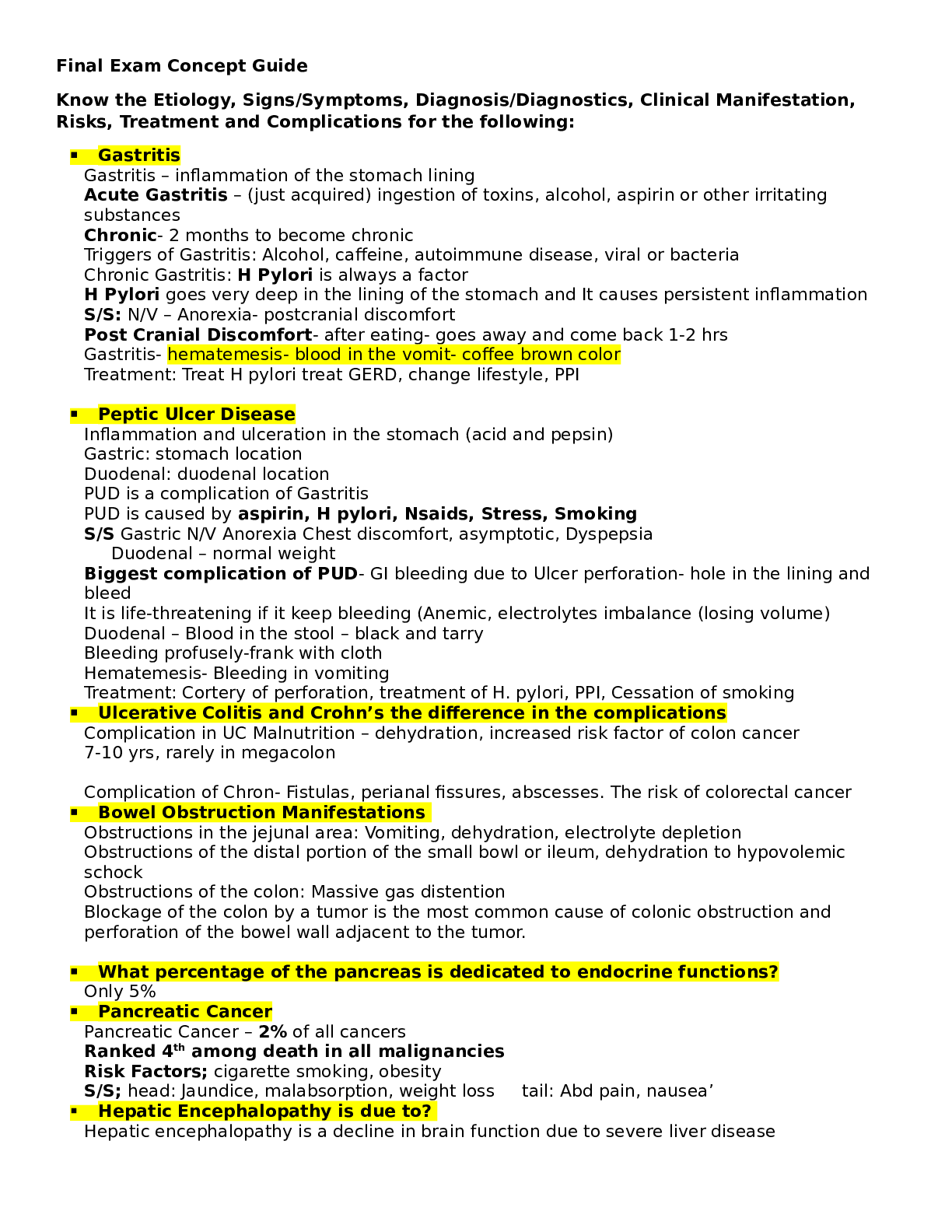
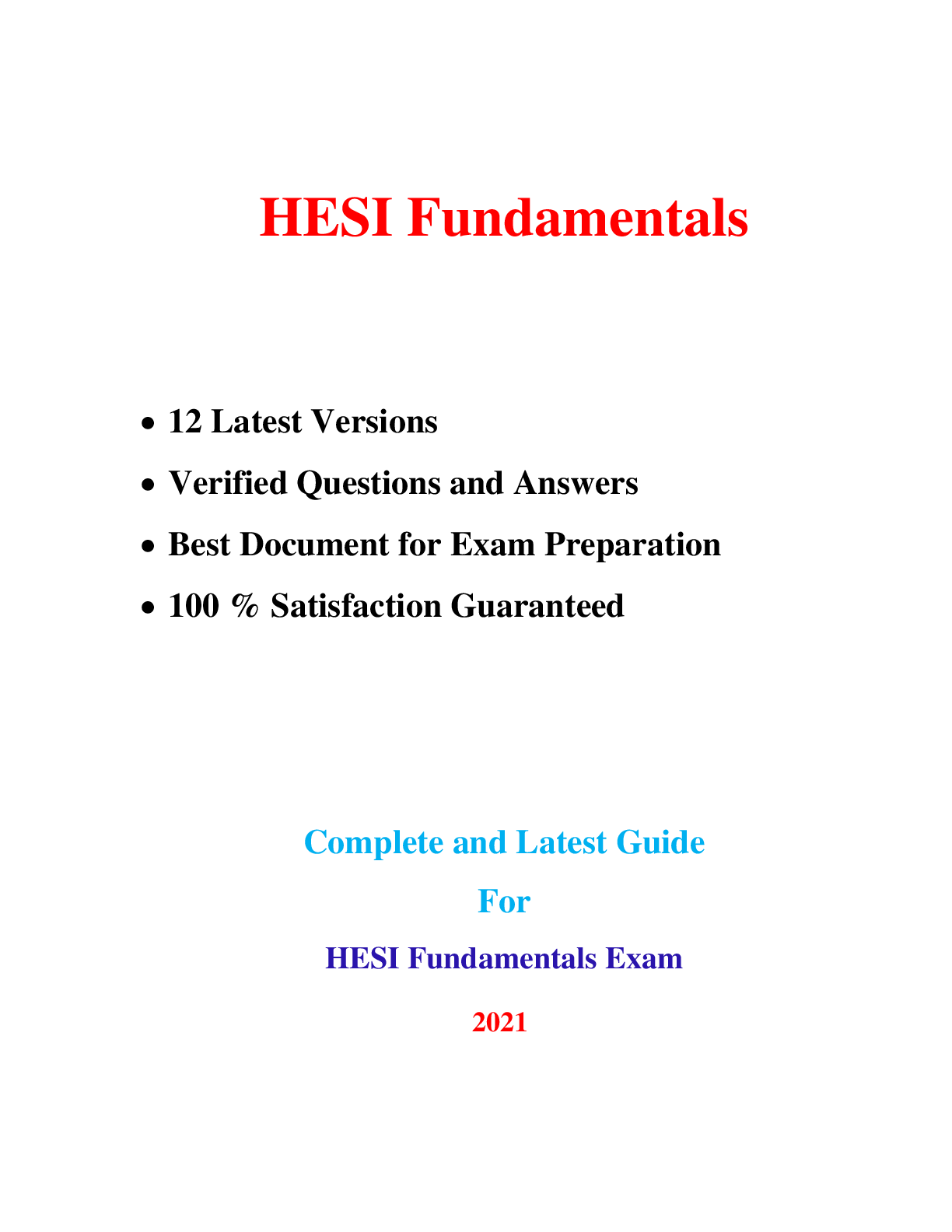

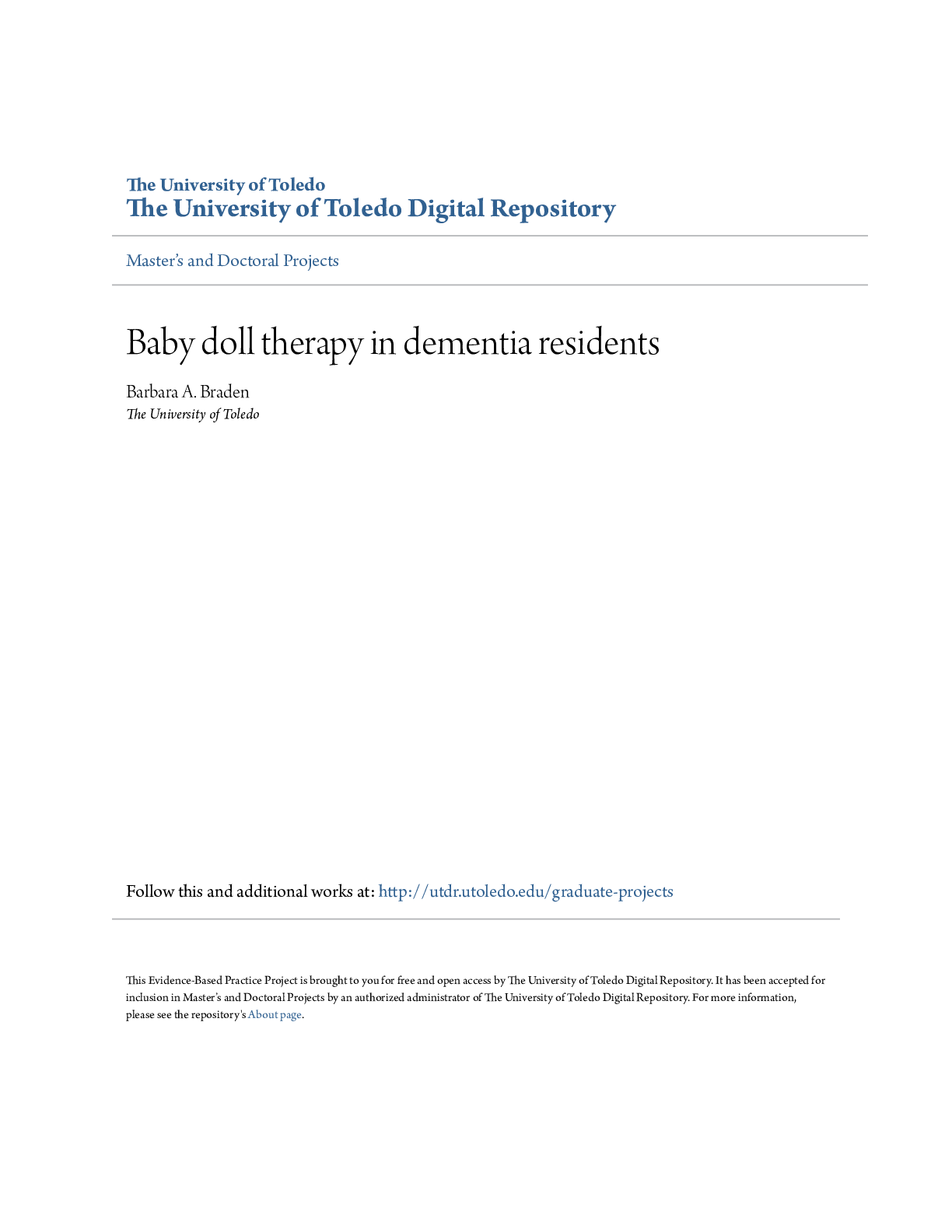
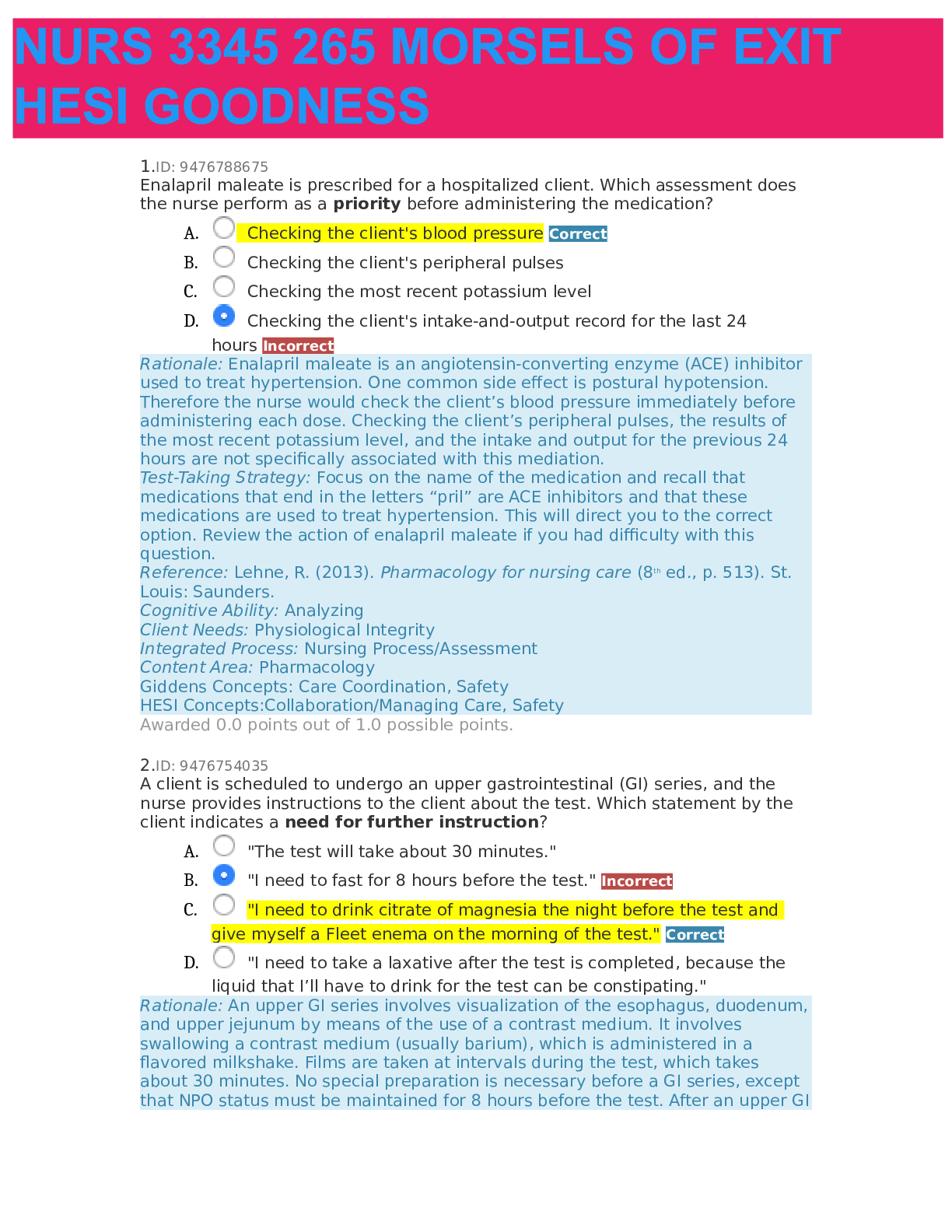

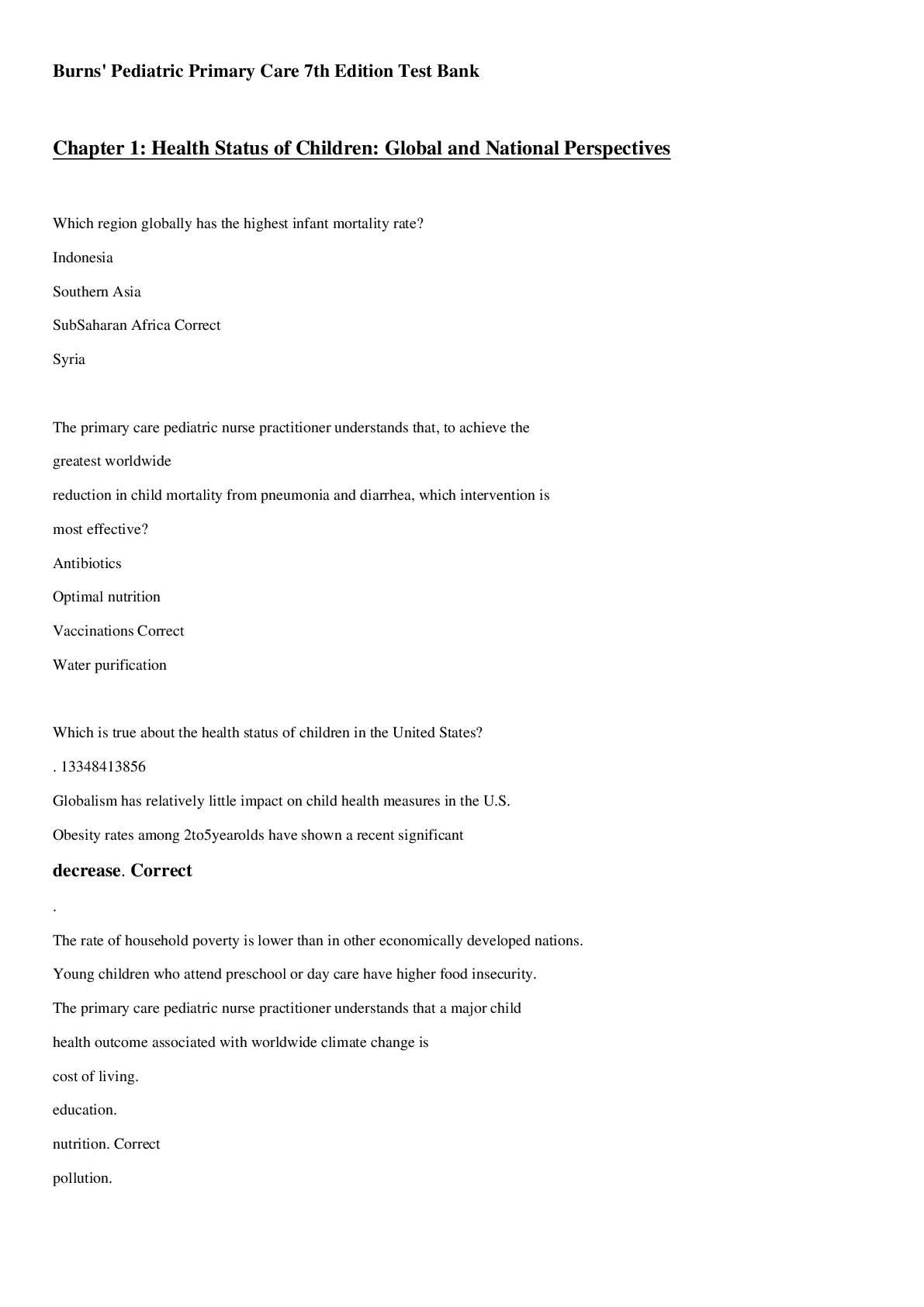

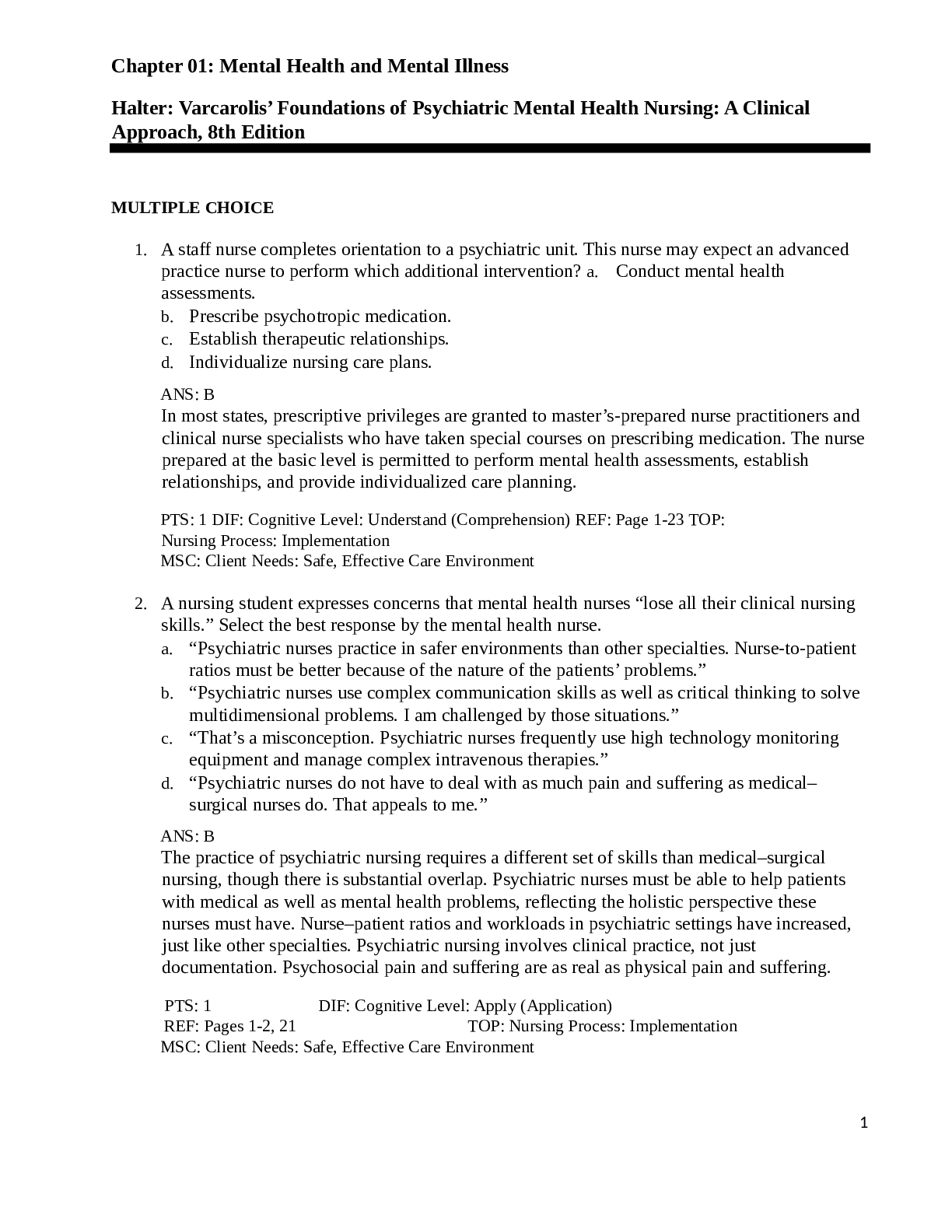

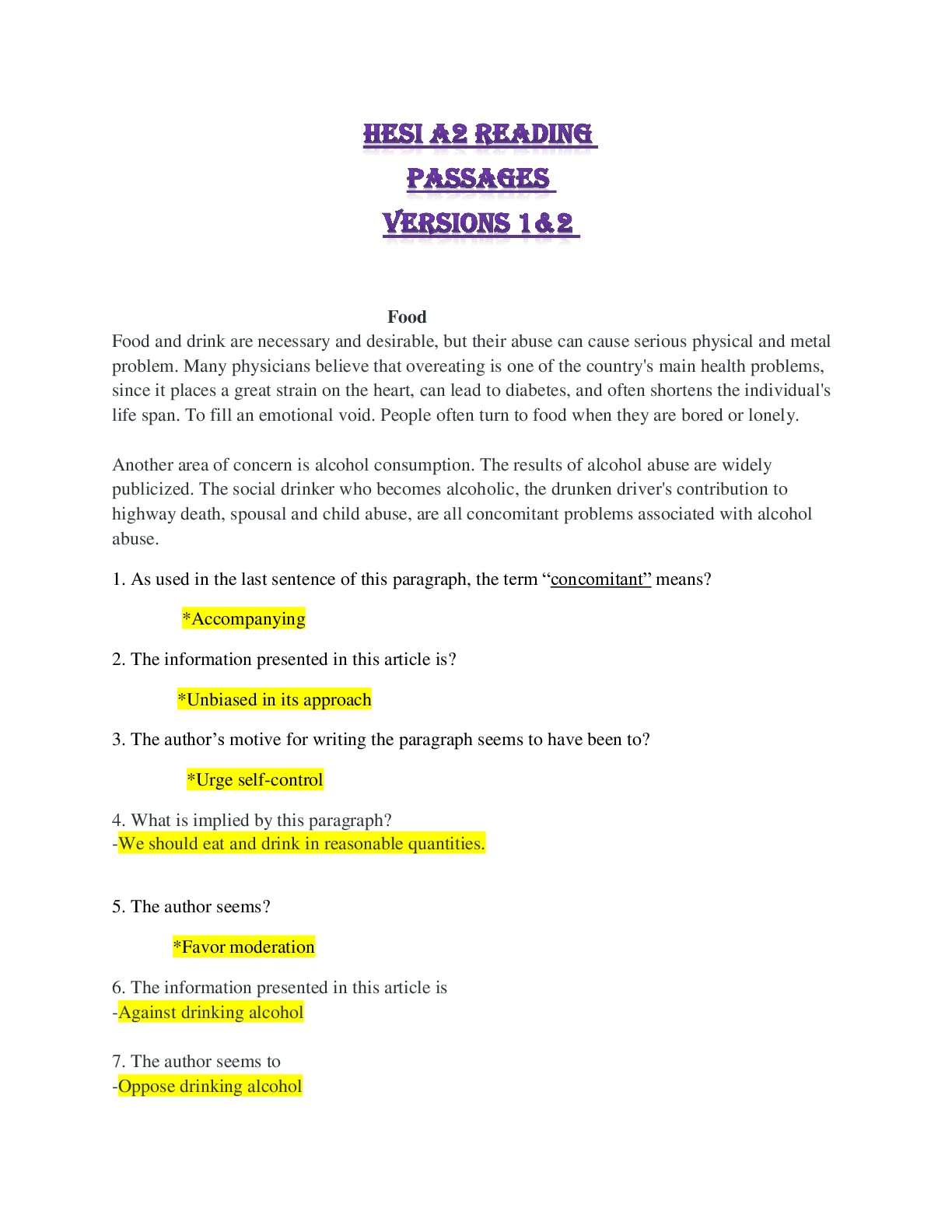
.png)
 (1).png)





